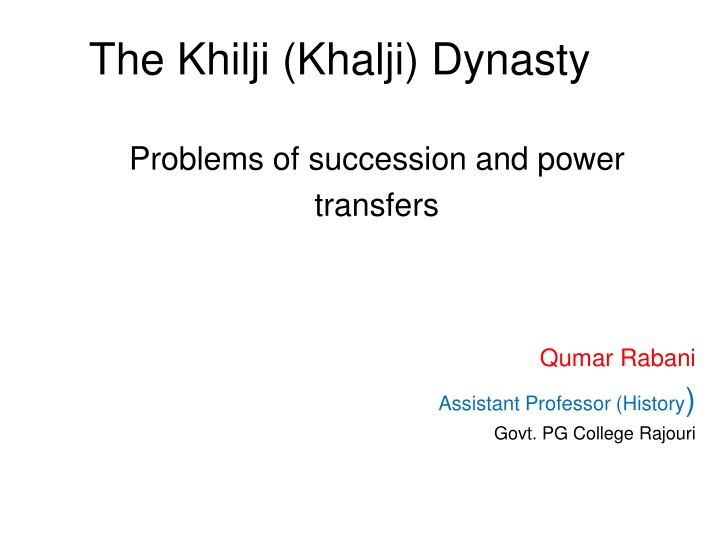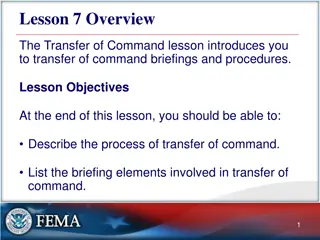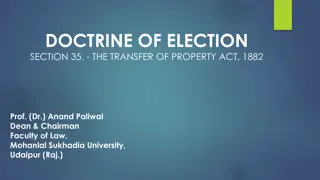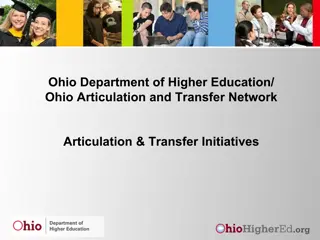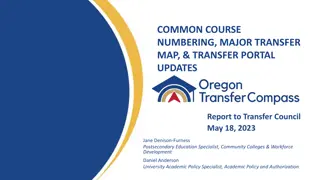Challenges of Power Transfer in the Khilji Dynasty
The death of Balban marked the emergence of Khalji power in the dynasty, leading to economic stabilization and increased market towns. However, internal issues such as the reduction of qualified officers and lack of competent successors arose. Balban's harsh punishments and centralized rule also contributed to challenges in succession and power transfer, further complicated by the hostility of Mongols.
Download Presentation

Please find below an Image/Link to download the presentation.
The content on the website is provided AS IS for your information and personal use only. It may not be sold, licensed, or shared on other websites without obtaining consent from the author.If you encounter any issues during the download, it is possible that the publisher has removed the file from their server.
You are allowed to download the files provided on this website for personal or commercial use, subject to the condition that they are used lawfully. All files are the property of their respective owners.
The content on the website is provided AS IS for your information and personal use only. It may not be sold, licensed, or shared on other websites without obtaining consent from the author.
E N D
Presentation Transcript
The Khilji (Khalji) Dynasty Problems of succession and power transfers Qumar Rabani Assistant Professor (History) Govt. PG College Rajouri
Death of Balban-emergence of Khalji power Economy stabilizes, market towns increase in number due to increased migration from Afghanistan and Persia Mongols contained on NW border Power of chehelgan reduced, through iqta reform and ga rrison towns, but they become more hostile to centralize d rule Balban s severe punishments and killings greatly reduce the number of qualified officers and generals, independe nt action discouraged and sycophancy encouraged No competent successor remains when Mohammad, the older son is dies in 1285.
Death of Balban-emergence of Khalji power Economy stabilizes, market towns increase in number due to increased migration from Afghanistan and Persia Mongols contained on NW border Power of chehelgan reduced, through iqta reform and ga rrison towns, but they become more hostile to centralize d rule Balban s severe punishments and killings greatly reduce the number of qualified officers and generals, independe nt action discouraged and sycophancy encouraged No competent successor remains when Mohammad, the older son is dies in 1285.
Death of Balban-emergence of Khalji power Economy stabilizes, market towns increase in number due to increased migration from Afghanistan and Persia Mongols contained on NW border Power of chehelgan reduced, through iqta reform and ga rrison towns, but they become more hostile to centralize d rule Balban s severe punishments and killings greatly reduce the number of qualified officers and generals, independe nt action discouraged and sycophancy encouraged No competent successor remains when Mohammad, the older son is dies in 1285.
Death of Balban-emergence of Khalji power Economy stabilizes, market towns increase in number due to increased migration from Afghanistan and Persia Mongols contained on NW border Power of chahalgani reduced, through iqta reform and garrison towns, but they become more hostile to centralized rule Balban s severe punishments and killings greatly reduce the number of qualified officers and generals, independent action discouraged and sycophancy encouraged No competent successor remains when Mohammad, the older son died in 1285.
Problems of succession Turkish custom did not favor primogeniture The nobility had some say in the selection of the next ruler if sultan did not appoint an heir Balban s attempt to create a succession failed Younger son Bughra Khan resented and feared his father since 1275 events in Bengal Muhammad s son Kaykhusrau was designated heir after Mohammad s death in 1285 but opposed by amirs Bughar Khan s son Kayqabad and his son Kayumars both had short reigns while the chehelgan attempted to use them as puppet rulers, Bughra stayed far away from Delhi
The Khaljis A tribe of mixed Afghani/Turkish descent Benefited from Balban s reforms, had greater cohesion than other groups, unite and nominate their senior chief, Jalal-ud- din Khilji as ruler (r. 1290-96) His generosity had won support, but is later criticized Growing evidence of his lack of desire from confrontation makes Khaljis nervous His nephew Ala-ud-din Khalji demonstrates superior military and leadership skills, particularly in the raid on Deogiri (1293-95), Khaljis begin to support him instead Jalal ud-din is assassinated on his nephew s orders in 1296
Ala-ud-din Khaljis Campaigns Suppresses several attempts by mongols and secures NW borders b/w 1296-1306 1299 Gujarat (important for sea trade) and Ranthambor annexed 1302-3 Orrisa and Bengal campaign unsuccessful 1303 Chittor and Central India Malik Kafur s expeditions Campaign against the Yadavs (Devgiri) 1306-07 Against the Kakatiyas of Warrangal 1309-1310 Against the Hoysalas of Dvarsamudra 1310 Against the Pandyas (southernmost) 1311
Khilji reforms-military Treasure from raids and economic reforms funds Military improvements Branding and registration of horses Role calls for soldiers Regulation of horse trade Fixed and regular cash salaries for soldiers reduces reliance on iqtas Ample supplies assured through economic reforms
Iqta Reforms Iqtas accessed and registered to reduce fraud and corruption Not hereditary, but assigned for a limited use, revert to treasure at end of appointment period Sizes kept small, holdings scattered to reduce influence of iqta holders Share of taxes from Iqtas reduced for chahalgani, other nobility and headmen, reducing their income, increasing the share of the treasury
Market Reforms Grain prices in cities and towns regulated to prevent excessive profits and ensure regular supply even in times of scarcity Markets for different goods created, regulated by officers inspecting goods for quality, weights, and measures Safety along trade routes increases, market towns proliferate starting in this period Registration of Merchants, advances made for certain trade goods from treasury
Controls over Chahalgani Reduced income from reforms, control over army also reduced More dependent on king for salaries and assignments Prohibited from forming alliances through marriages or under cover of parties Increased surveillance of activities, audits of wealth and tax collections
South Asia at the time of Khiljis death, 1316 Long period of stability, furthest extent of Sultanate empire Power of Chahalgani greatly reduced, that of new groups such as Afghans and some Rajputs increases this too has some drawbacks Economic gains continue into the later sultanate dynasties Royal patronage leads to greater interest in architecture, patronage of literature, founding of schools (madrasas) Relative prosperity of Indian Sultante leads to greater migration of scholars, Sufis, from Iran and Afghanistan as Mongal invasions continue (cont. next slide)
Cont. Greater period of Urbanization, Muslims mainly to be found in Urban areas both rich and poor Urban poor, certain peasants, new migrants favor Sultan as do some ulema and sufis who gain patronage The Urban rich (Nobility, some merchants) antagonized. Some Sufis such as the Chistis critical of growing power of Sultan. Reaction of Peasants mixed due to market reforms
End of Khilji rule: Problems of Succession Ala-ud-din Khilji was bed-ridden and ill during his last year, Malik Kafur, his general, was in a muc h stronger position to grab the throne than his teenage sons. During a bloody coup, many of the Khilji princes were killed, but their body-gaurds were able to resist Kafur and kill him. Mubark Shah succeeded as Khilji king, however, he delegated much of his authority to his generals.
The last Khilji Sultan By the early 14thcentury, the Khilji army had larg e numbers of Hindu soldiers working for various emirs Hindu and Muslim Khusrau Khan, a recent convert, was the genera l and using his power base in the army killed Mu barak Shah in a coup in 1320. Only the opposition of the Turkish emirs stopped Khusrau Khan from ruling the last of the import ant Sultanates, the Tughlaqs, would replace him.
